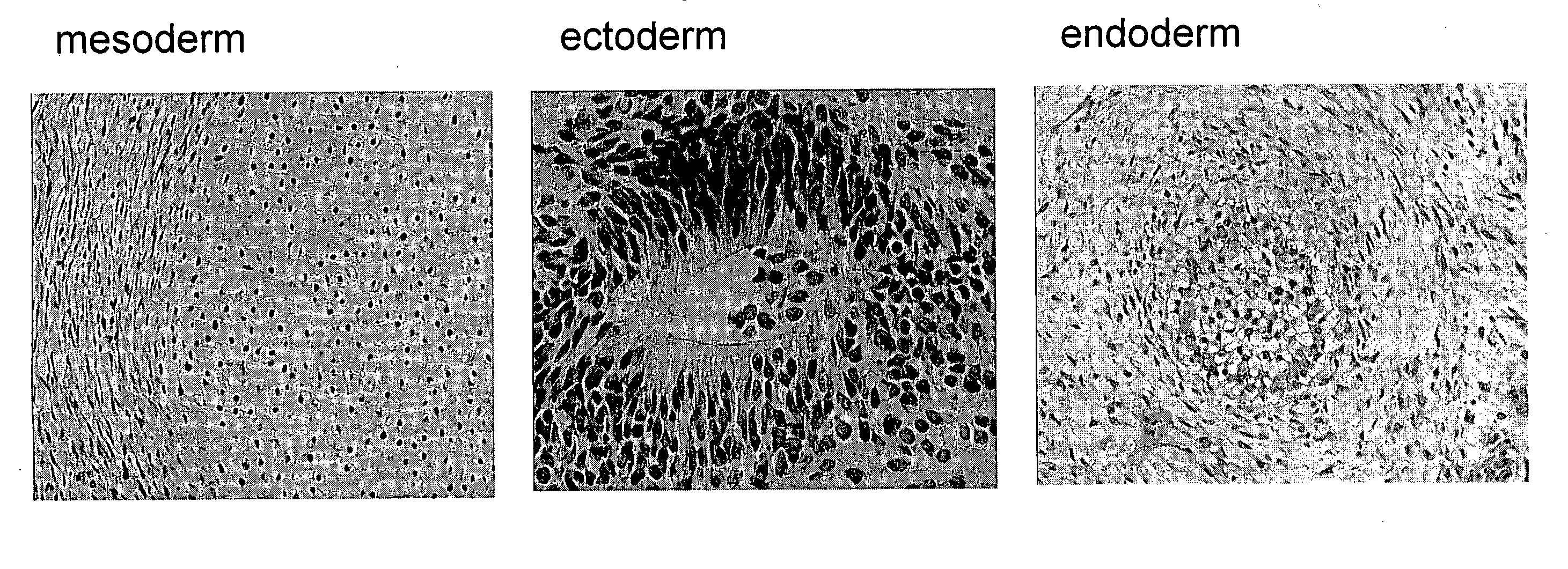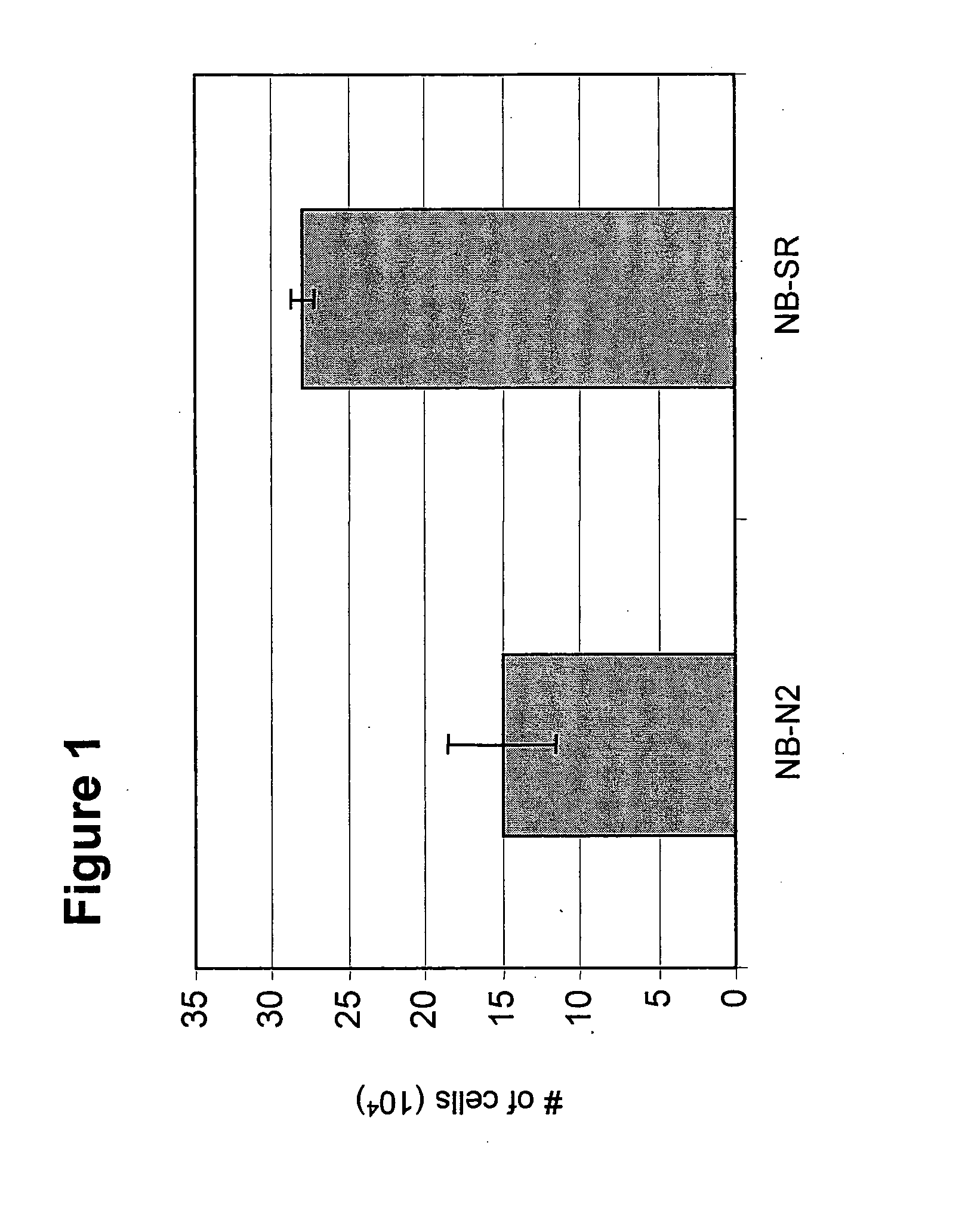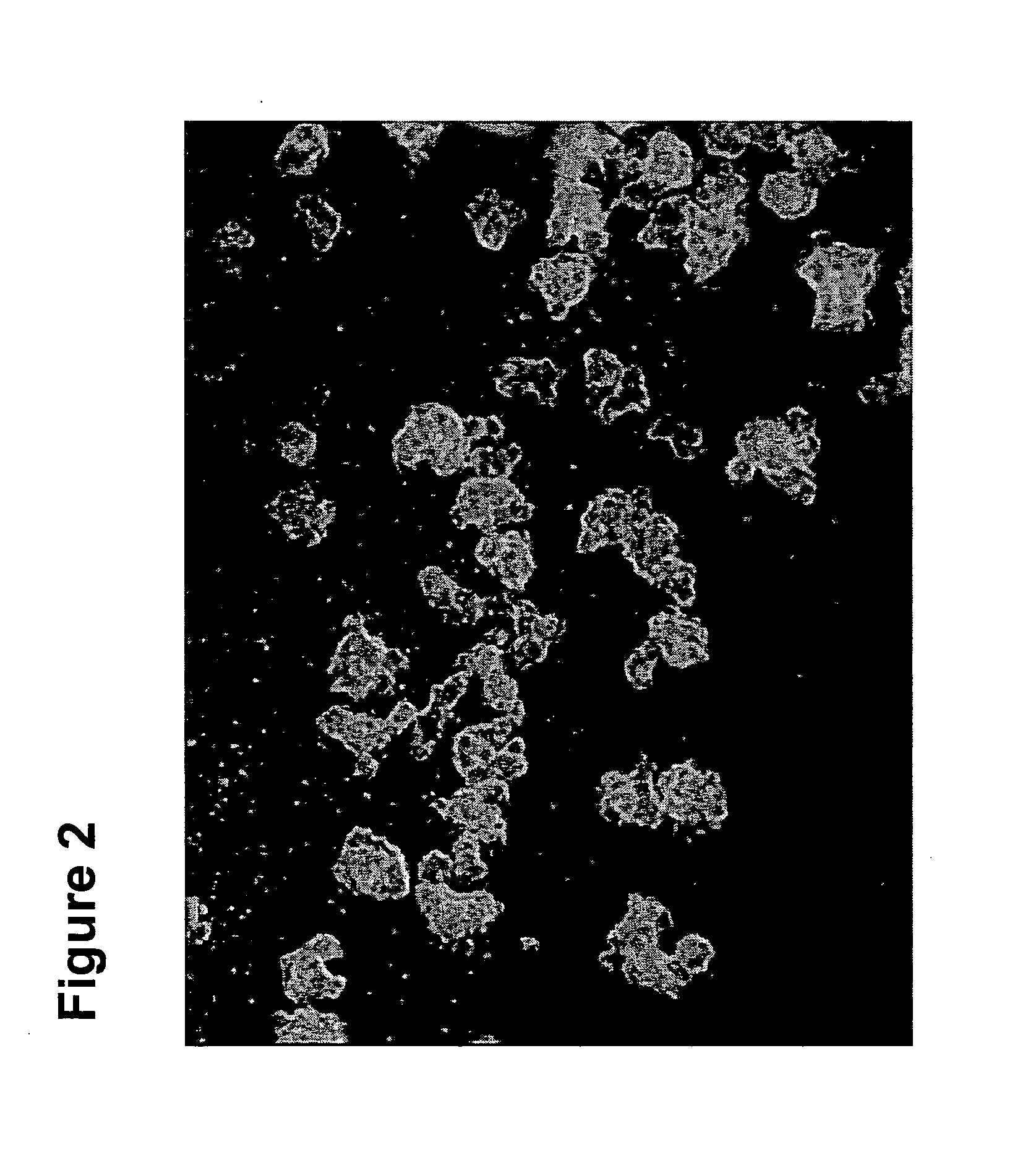Undifferentiated Stem Cell Culture Systems
a stem cell culture and undifferentiated technology, applied in the field of stem cells, can solve the problems of not allowing efficient cloning, low efficiency, and not allowing the propagation of pure populations of undifferentiated stem cells
- Summary
- Abstract
- Description
- Claims
- Application Information
AI Technical Summary
Benefits of technology
Problems solved by technology
Method used
Image
Examples
Embodiment Construction
[0090]The present disclosure provides a detailed description of culture systems for handling suspensions of stem cells, preferably human embryonic stem cells in an undifferentiated state. It should be noted that in addition to the culture systems discussed in detailed hereinbelow, also encompassed herein are uses of specific components described with reference to the culture system in the preparation of such stem cell cultures, as well as to methods of use of the culture system in handling stem cell cultures and methods of preparing cultured cells.
[0091]As used in the specification and claims, the forms “a”, “an” and “the” include singular as well as plural references unless the context clearly dictates otherwise. For example, the term “a stem cell” includes one or more stem cells, and the term “stem cells” includes one stem cell as well as more than one stem cell.
[0092]As used herein, the term “or” means one or a combination of two or more of the listed choices.
[0093]Further, as us...
PUM
 Login to View More
Login to View More Abstract
Description
Claims
Application Information
 Login to View More
Login to View More - R&D
- Intellectual Property
- Life Sciences
- Materials
- Tech Scout
- Unparalleled Data Quality
- Higher Quality Content
- 60% Fewer Hallucinations
Browse by: Latest US Patents, China's latest patents, Technical Efficacy Thesaurus, Application Domain, Technology Topic, Popular Technical Reports.
© 2025 PatSnap. All rights reserved.Legal|Privacy policy|Modern Slavery Act Transparency Statement|Sitemap|About US| Contact US: help@patsnap.com



